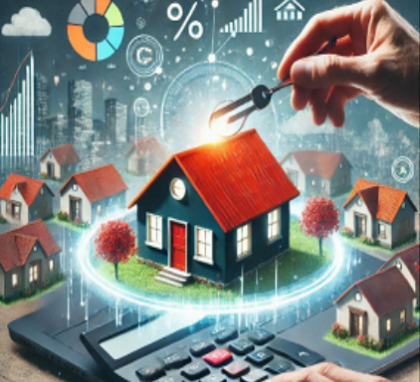Creditworthiness in the contemporary financial ecosystem is measured through more than just traditional means. The use of alternative data to assess borrower risk is revolutionizing lender decision making. It not only expands access to credit for underbanked people, but it also provides more accurate risk assessments. Here’s a run-down of how alternative data is transforming financing, as well as actionable insights for both borrowers and lenders.

What Is Alternative Data?
Alternative data is all the non-traditional information used to assess a borrower’s creditworthiness. Traditional credit scores place great emphasis on repayment history, credit utilization, and outstanding debt, while alternative data uses:
- Utility payments: Payments for electricity, gas, and water.
- Telecom Data: Mobile phone and Internet bills.
- Rent History: The monthly rent payment.
- Bank Data: Payment habits, bank balances, and transaction histories.
- Employment History: Jobs and income consistency employment records
- Behavioral Data: E-commerce activity, social media engagement, among others.
Limitations of Traditional Credit Scoring
The conventional credit scoring system frequently leaves a large segment of the population out in the cold. About 1.4 billion adults around the world do not have access to formal financial services, according to the World Bank. In the US, an estimated total of 26 million adults are rated as credit invisible — they have no credit history, according to the Consumer Financial Protection Bureau (CFPB). Another 19 million people have thin credit files that traditional scoring models cannot consider. These constraints hit younger people, immigrants and the working poor particularly hard. These groups are missed by traditional ways of doing things that do not reflect their financial behavior.
Advantages of Alternative Data
- Greater Financial Inclusion: Alternative data helps lenders evaluate people who have no traditional credit history. Credit for a Wider Audience — by taking into account consistent rent payments or stable employment records, lenders can offer credit to a much wider audience.
- Improved Risk Assessment: Alternative data provides a holistic picture of a borrowers’ financial health. Consider someone with a relatively poor score who has a consistent track record of paying utilities on time, for instance; he or she may pose a lower risk than their score suggests.
- Improve Predictive Accuracy: According to a report by FICO, applying Alternative data can improve predictive accuracy by 15% and above. This enables lenders to make better decisions resulting in fewer defaults and increased profitability.
- Speedy Loan Approvals: It can take a significantly shorter time span for systems powered with alternative data to parse these applications. This is particularly useful for low-value loans where traditional underwriting can take time and costs money.
Challenges in Using Alternative Data
The prospect of alternative data brings with it new challenges like:
- Questionable Privacy: E- commerce took non-standard sources which landed them in hot water of privacy breach and data protection.
- New Interpretation of Processes: The use of alternative data in the finance sector has some regulatory compliance and adherence issues.
- Limitations of Alternative Data Standardization: The assessment of alternative data is non-standardized and its application among lenders also tends to differ
- Bias and Fairness: The algorithms interpreting the alternative data need to be crafted with care to ensure that existing biases are not amplified.

Use Cases of Alternative Data
- Fintech Solutions: FinTech is leading the way in the use of alternative data. For example, in India, KreditBee relies on utility bill payments as well as online purchase history to determine whether young urban workers are eligible for a loan. Petal Card in the US uses banking history and cash flow to grant credit cards for those without traditional credit histories.
- Mortgage and Rental Markets: Companies such as Experian provides rental payment reporting services so that renters can establish credit histories and more easily qualify for mortgages.
- Microfinance: In regions where traditional credit data is scarce, microfinance institutions have turned to alternative data like mobile money transactions and community reputation to assess borrower risk.
How Borrowers Can Benefit?
To actively build their alternative credit profile, borrowers can:
- Keeping up with rent and utility payments.
- Ensuring consistency in your employment history.
- Having a positive balance in savings accounts.
Leverage Fintech Tools
There are many apps and platforms that help users monitor their financial behavior. Services such as Credit Karma and Experian Boost let users add alternative data to their credit reports.
Advocate for Data Reporting
Renters and utility payers may ask their landlords or service providers to report payments to credit bureaus. And it can help you to build a credit profile over time.
Next Step towards Alternative Data Usage
- Integration of AI and Machine Learning: AI transforming alternative data analysis. This enables machine learning maintenance models to identify patterns and predict borrower behavior more effectively.
- Expanding Data Sources: Alternative data such as health records and carbon footprint feedback are being used to provide a broader view of financial responsibility.
- Cross-Border Lending: One such example would be cross-border lending to individuals from various walks of life across the globe, and alternative data can enable this.

Future Outlook
This is a transforming change in Decentralized Finance that Data and Model are significant in any financial activity. This modifies the way of doing managing finance. For borrowers, it opens doors for them to access credit despite traditional histories. For lenders, it promises more informed decision making and access to underserved markets. This trend is growing, however; stakeholders must address privacy, regulation and bias to level the playing field. Hence, if we take conscious care of the same, alternate data can also be used by the financial industry to create a better ecosystem which is fair and can benefit each and every one of us.




